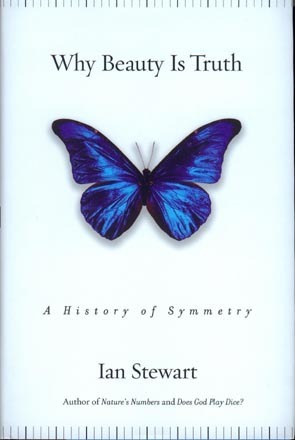What do you think?
Rate this book


290 pages, Hardcover
First published August 2, 2007
The four structures that Killing refers to are the Lie algebras su(n), so(2n), so(2n+1), and sp(2n) corresponding to the families of groups SU(n), SO(2n), SO(2n+1), and SP(2n): the unitary groups, the orthogonal groups in spaces of even dimension, the orthogonal groups in spaces of odd dimension, and the symplectic groups in spaces of even dimension. The symplectic groups are the symmetries of the position-momentum variables introduced by Hamilton in his formulation of mechanics, and the number of dimensions is always even because the variables come in position-momentum pairs. Aside from these four families, Killing claimed that exactly six other simple Lie algebras exist.